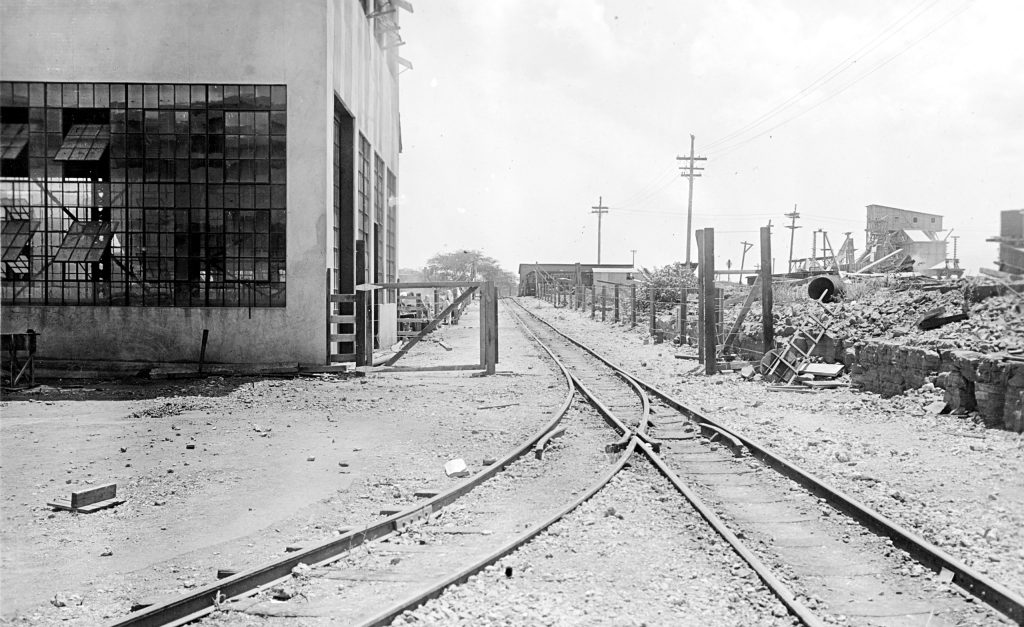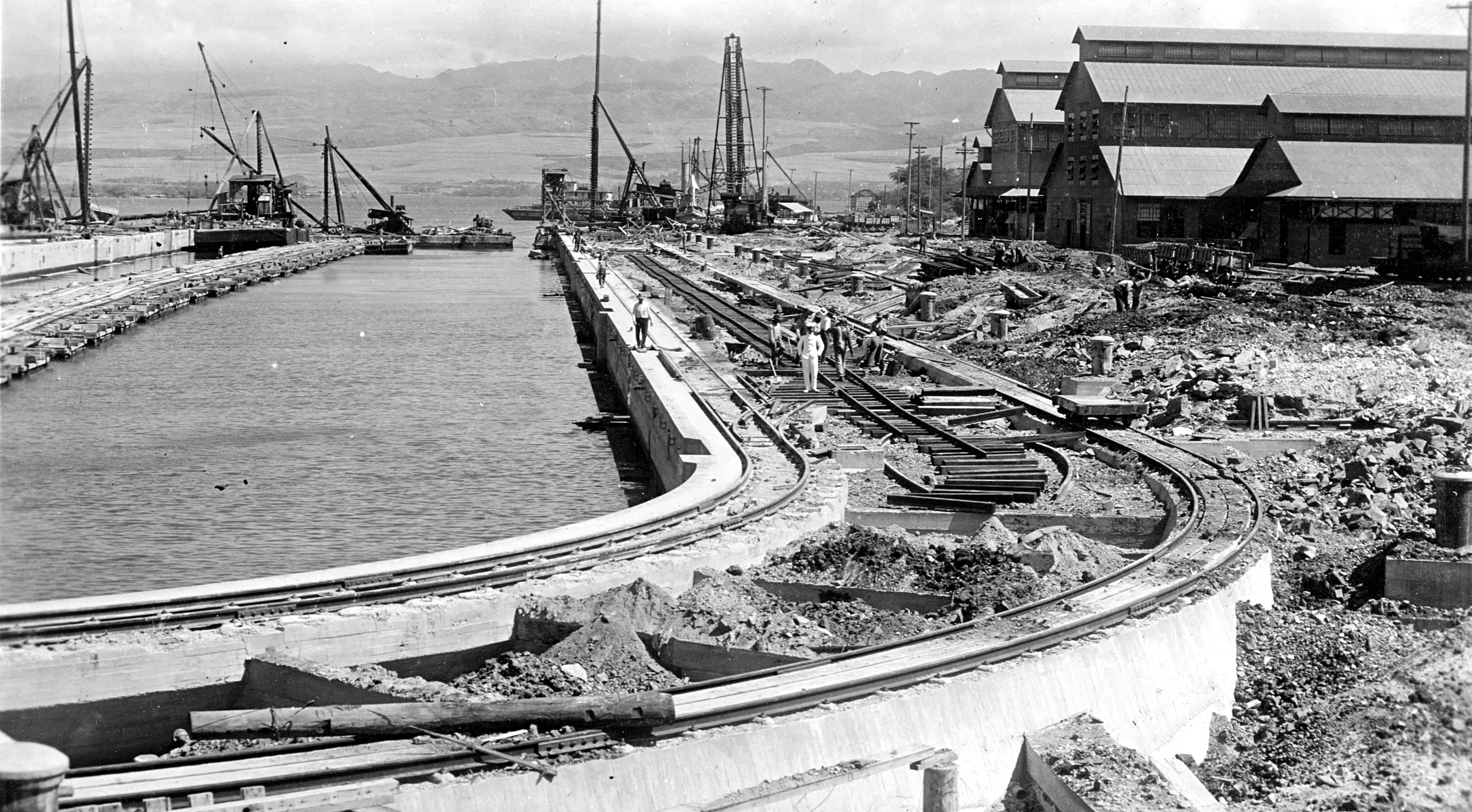The construction of the Pearl Harbor Naval complex was authorized in 1908 and major construction began in 1909. The complex included a Navy construction railway component. The first 0-4-0 Porter was acquired in 1909 along with some number of dump cars. Civilian contractors built much of the yard and the construction of the “centerpiece” of the yard, the Battleship Dry Dock, was supported by the contractor’s railroad system. All other construction was supported by the Navy’s rail system. All this was temporary until 1911 when the Navy Yard was sufficiently developed to begin construction of the first permanent rail system connecting the shops and repair facilities to the piers and wharfs.

Concurrent with the Navy Yard construction, a Naval Magazine was developed on Kuahua Island, within Pearl Harbor, which had its own independent rail system using a compressed air Porter locomotive and a few box and flat cars. In 1913 construction of a 200,000 ton coaling plant was started. The rail equipment of the coaling plant consisted of three Vulcan standard gauge locomotives, fifteen Oliver 20-yd. air operated dump cars and six locomotive cranes. This was the only standard gauge operation on Oahu. The order to Vulcan also included one 3-foot gauge locomotive for the Shipyard. Freight cars were supplied by Seattle Car and Foundry ca. 1913 and Gregg ca. 1915 based on period newspaper articles and photos. Other manufactures may have supplied cars as well but there is as yet no documented information.
1915 brought another narrow gauge locomotive to the shipyard as well as two narrow gauge locomotive cranes. By 1918 when construction of the Submarine Base was begun the Shipyard railroad was connected via a causeway to Kuahua Island. Although construction continued at Pearl Harbor throughout the 20’s and 30’s not much changed with regard to the railroad. A little more track was added, another locomotive was acquired and it is assumed more freight equipment, As the Pearl Harbor complex continued to grow the Naval Magazine on Kuahua Island became both to small to service the fleet and a liability. Having such a large quantity of munitions so close to the repair and port facilities was not best practice. In 1933 the Navy moved the magazine to the landlocked Lualualei Valley and established an ammunition depot at West Loch, away from Pearl Harbor. These two facilities were each provided with one 35-ton Atlas diesel electric locomotive and a few box and flat cars from Kopple. The compressed air Porter was transferred to West Loch along with a few overhauled box and flat cars from Kuahua.
In the mid 1930’s the Army transferred a narrow gauge steam locomotive to the Navy Yard and in 1939 another that had been used by the 41st Coast Artillery (Railway). The Yard also received a new 35-ton Davenport Diesel Mechanical in 1940. These three Navy facilities were connected by the Oahu Railway and Land Company (OR&L) who handled all moves between them. The same applied to the Army facilities. That was the status quo until the morning of 7 December 1941. Following the surprise attack on Pearl Harbor both the Navy and the Army found their railroad resources woefully inadequate to prosecute a war. The United States Mainland was scoured for useable narrow gauge equipment and soon equipment from the D&RGW, C&C, F&CC, SP, EBT and others began to arrive. The government also commandeered a large lot of cars built for the Argentine State Railway by Pullman Standard and diverted them to Hawaii. Large orders were placed with various manufacturers for locomotives and all types of freight cars. By war’s end 23 new diesel locomotives had been received by the Navy as well as hundreds of freight cars of all types.
At the end of the war, the OR&L, having operated 24/7 was simply “used up”. Unable to compete with trucks using the new roads built by the military, the OR&L abandoned its main line on 31 December 1947 effectively cutting off service to all the military installations. The Navy, however, took an option for $1.00 on the tracks between Lualualei, West Loch and Pearl Harbor and continued to operate between these three locations until about 1954 when a tsunami destroyed a junction at Waikele cutting off Pearl Harbor. Operations continued between Lualualei and West Loch until 1972 when all rail operations ceased. Three Navy diesel locomotives survive in operation at the Hawaiian Railway Society as well as a number of ammunition boxcars. Everything else, as is said, is history.
